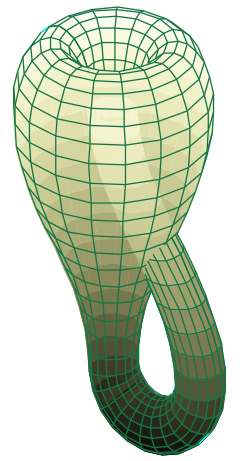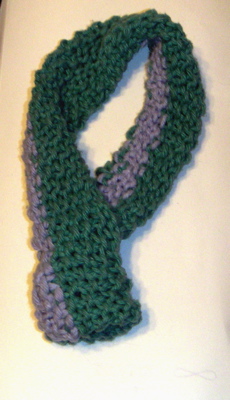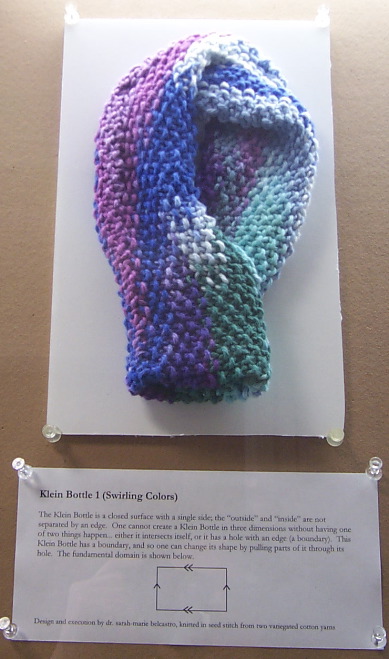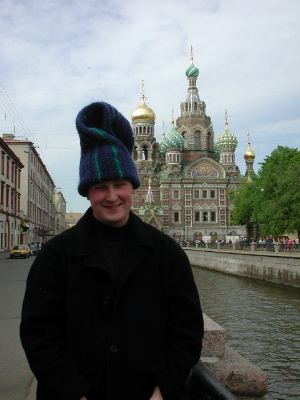Week 19 = Mathematical Knitting
Day 2 = May 8, 2014
From Wikipedia, the free encyclopedia
In mathematics, the Klein bottle /ˈklaɪn/ is an example of a non-orientable surface; informally, it is a surface (a two-dimensional manifold) in which notions of left and right cannot be consistently defined. Other related non-orientable objects include the Möbius strip and the real projective plane. Whereas a Möbius strip is a surface with boundary, a Klein bottle has no boundary (for comparison, a sphere is an orientable surface with no boundary).
The Klein bottle was first described in 1882 by the German mathematician Felix Klein. It may have been originally named the Kleinsche Fläche ("Klein surface") and that this was incorrectly interpreted as Kleinsche Flasche ("Klein bottle"), which ultimately led to the adoption of this term in the German language as well.[1]


Structure of a three-
dimensional Klein bottle
A two-dimensional representation
of the Klein bottle immersed in
three-dimensional space
Sarah-Marie Belcastro's web site is where I got theses pictures and information on how to knit a Klein Bottle. Interestingly enough the Klein Bottle is based off of the Mobius band.
Transfer half of your stitches to a second circular needle. What you're basically going to do is Kitchener (graft) the stitches on one needle to those on the other. If you look at a few-stitch-wide strip of your band, you can see how the loops at the top of two adjacent stitch-columns can be Kitchenered to the bottom of the loops at the bottom (and 1/2 stitch to the right or left) of these columns. If you just match those up and start, you'll be fine.
Now: this is tricky, for two reasons. (1) You have to do your Kitchener in a knit-purl sort of way, so that you get a consistent pattern instead of an obvious seam. Sorry, I can't explain how to do that. I re-figure it out every time I do it. (2) There are those dang needles in the way. I usually pull the needles so that all the stitches are on the middle, skinny parts of the needles, then start Kitchener-ing, and then every 10-15 stitches, pull the needles out of the object a bit.
 You'll Kitchener until you seem to have just a hole around another part of the Klein bottle left. Now you can cast off. As with a Möbius band, there are three tasks that remain: knit in the end of the yarn, get rid of the scrap yarn (if you used any), and knit in the beginning of the yarn. If I use scrap yarn, I usually have to cut it every 3 - 4 stitches or so. And, when knitting in the beginning of the yarn, look carefully at your stitches so that you don't create a hole or piece of seam.
You'll Kitchener until you seem to have just a hole around another part of the Klein bottle left. Now you can cast off. As with a Möbius band, there are three tasks that remain: knit in the end of the yarn, get rid of the scrap yarn (if you used any), and knit in the beginning of the yarn. If I use scrap yarn, I usually have to cut it every 3 - 4 stitches or so. And, when knitting in the beginning of the yarn, look carefully at your stitches so that you don't create a hole or piece of seam.Knitting question of the day
Would you wear a Klein Bottle hat?
Klein Bottle Knitting,Victoria



No comments:
Post a Comment